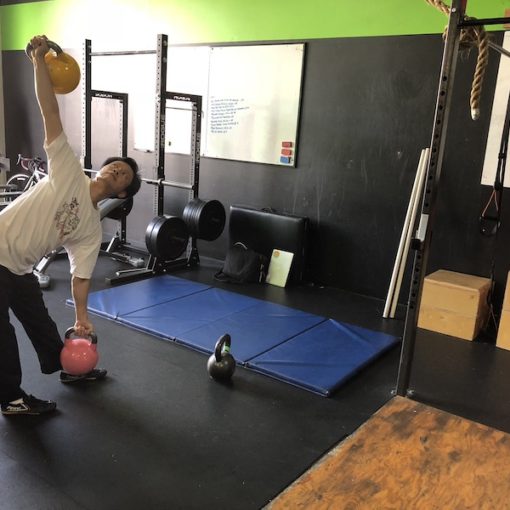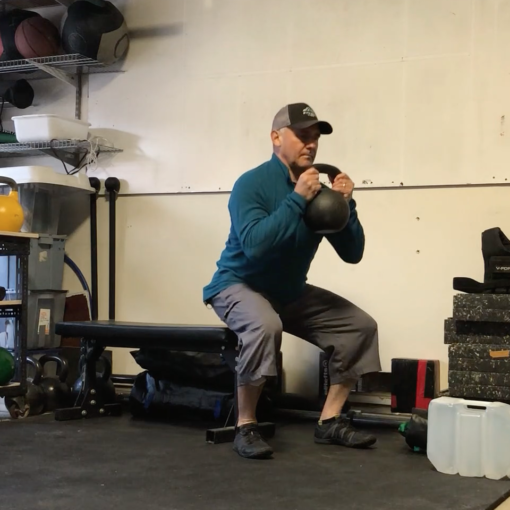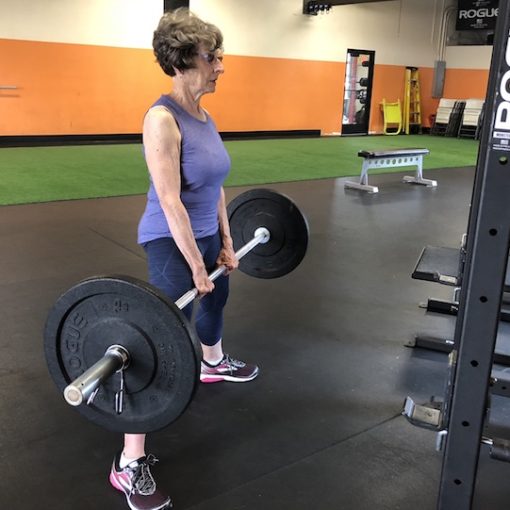The shoulder is one of the most mobile joints in the body. As such, many injuries of the shoulder joint present as a lack of functional range of motion (ROM) and/or pain while in a normal range of motion. Nearly every athlete I see over 40 has some sort of shoulder issue. Their issues vary anywhere from “When I reach over and get my coffee cup it hurts” to “every once in awhile it doesn’t move smoothly.” Or my own issue, that has since been addressed, “I can’t do any push-ups without pain.” Everyone has a good shoulder and a bad shoulder or as one of my massage therapist friends calls it: A “Dark side.”
In a fitness context, lack of shoulder function significantly reduces both the number of exercises athletes can train and, most importantly, the athlete’s consistency. If lack of shoulder function is problematic, what does appropriate shoulder function look like, how do I get there and how long does it take. I’m glad you asked, let’s break those down one at at a time.
One caveat, these are my own standards I use to determine where to start a training program. Different practitioners are going to have standards depending on their training, experience and end goals.
Appropriate or Healthy Shoulder Function
Pain-free in the range of motion we are going to train: I often train people who walk in with some pain, but after warming up they are pain free. That is good enough for me, especially if they are trending pain-free over the weeks.
Symmetry: I would like the left and right sides to be roughly symmetrical. If I have a tennis player or someone who has had an operation or or traumatic event that is not always possible but symmetrical function is a good indicator of a healthy shoulder.
Minimal compensation: When a standing athlete raises one or both hands over her head, I am looking for minimal spinal and neck movement. In addition, I am looking for appropriate shoulder blade movement (sorry to be vague here, everyone is a little different). In addition, when an athlete is laying on the ground and moving his arm across his midline, I would like to see minimal movement of the lower limbs.
Ability to participate in activities that bring you joy: As athletes age, I see them saying, “I used to play tennis every other day but now that hurts my shoulder. But I’ve found that if I rest for two days, I can still play.” Sounds reasonable, but that soon turns to 3 days of rest, then only playing once a week, then, slowly, they quit their sport. I get it, as I have aged, my priorities have changed. However, what if some specific training 15 minutes a day 3 – 4 times a week will let you return to the activity(ies) that adds value to your life?
How Do I Improve My Shoulder Function?
The first thing to do is use a screen to get a baseline. A screen is a position or movement that helps you determine whether you need to stop or rest (i.e. red light), be careful (i.e. yellow light) or you’re good to go (i.e. green light). An appropriate training program for you will get you from Point A to Point B, a screen will help you get a measurable Point A.
The video below demonstrates some screens that I use most often. However, the best screen is the movement or position that prevents you from participating in the activity you want to and/or causes pain (i.e. your red light) or, maybe most importantly, the position or movement that tells you it is OK to go harder that day (i.e. your green light).
One important thing about a screen is that it doesn’t tell you want to do, it just gives you information, you have to decide what to do about that. Think of your screen as an eye chart. If you can’t read the third line down, what should you do? Well, it depends on a number of things, but if you mostly stay at home and watch TV and you rarely drive, maybe you don’t have to do anything. On the other hand, if you drive at night everyday in a busy city, you should probably see some sort of eye specialist.
After you get a screen that is appropriate for you, it’s time to get busy. However, first let’s talk process for a second. There is no tool that I know of that will look into your shoulder while you are moving and tell you want muscles are working (or not working) or if that rotator cuff tear has anything to do with that clicking. So since we can’t use structure/imaging reliably, we are going to have to make some educated guesses using an organized process. I have developed a Movement Manifesto that drives my process. Specifically for the shoulder, my principles boil down to the following:
- Develop positions, if any, that are necessary for appropriate training.
- Train in positions where the athlete can be most successful.
- Progress in an orderly way so that you don’t miss anything. One orderly way of training that I use often is to follow the neurodevelopmental sequence.
In the video below, I have included three exercises that I use on a daily basis to get a better understanding of an athlete’s ability to position themselves, how he/she will move in and out of that position and how much strength he/she has in that movement pattern. In addition to being good screens, they are also good exercises that have helped both myself and many others.
Let’s quickly walk through the exercises:
Do all three screens to determine which you think will be a good indicator of shoulder health and function for you.
Breathing has been a game changer for me and many others. It is a great way to “stretch” and “strengthen” some muscles that are hard to get with traditional exercises. I usually do 10 or 15 deep breaths and then re-do my screen to change for changes.
Windshield Wiper is a great way to start getting at some movement through both your waist and rib cage areas which can, in turn, help with Shoulder function.
Quadruped progression is my favorite way of seeing how ready a person is to start training push-ups and single-leg exercises.
How Long Does it Take?
It is hard to say, but it is common to see changes within the first week or two. For others, these aren’t the right exercises and they need to change a few times before they settle on something that works for them. I just want to caution, while you make changes the first day, they probably won’t “stick.” However, if you are lucky enough that these exercises work for you, I would expect to see some positive changes in about 3 weeks.
Need More Help?
Take a video of yourself doing these exercises and send them to me (saulj at FitnessInReno dot com) and schedule a consultation to go over the videos.




